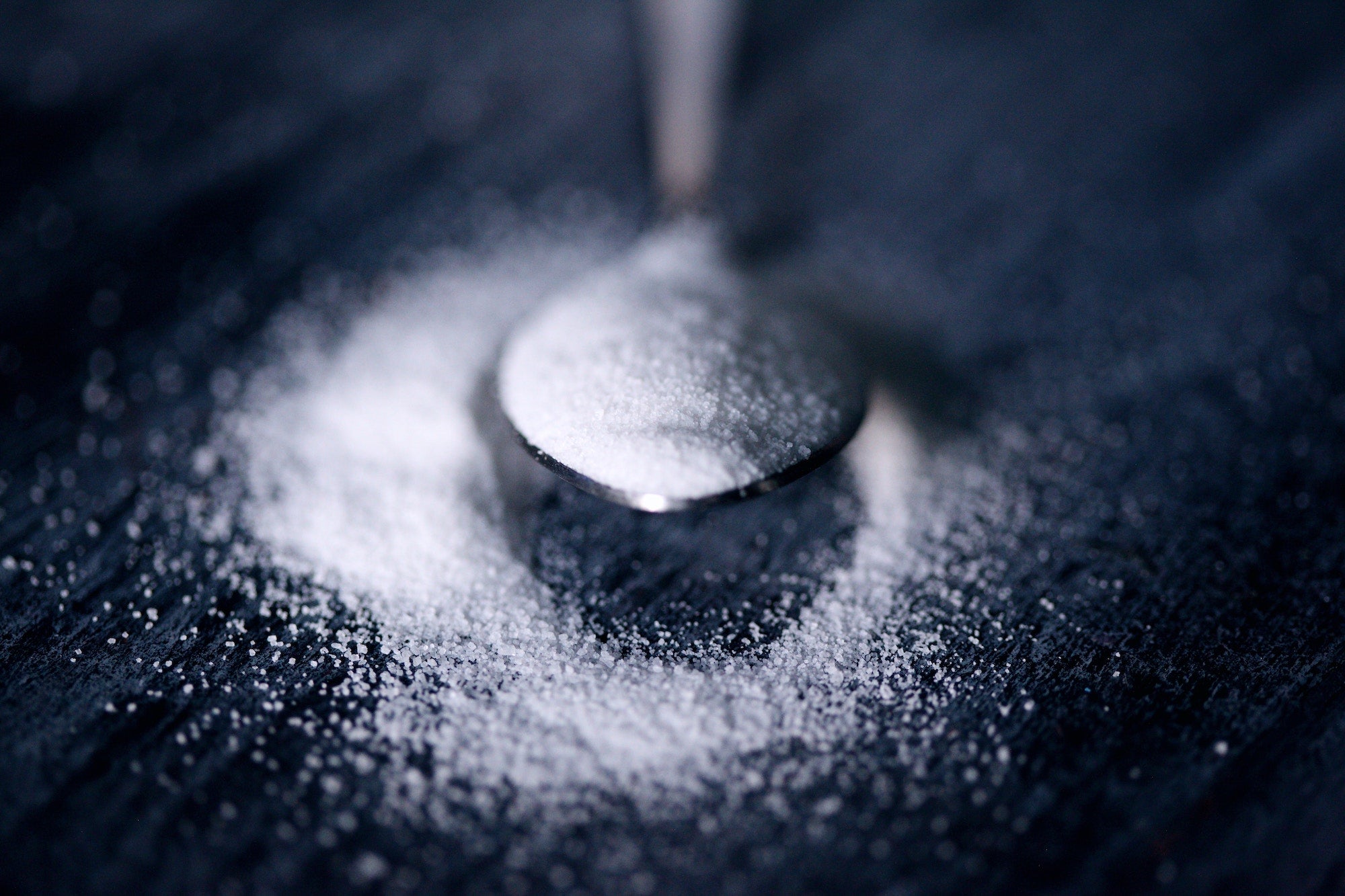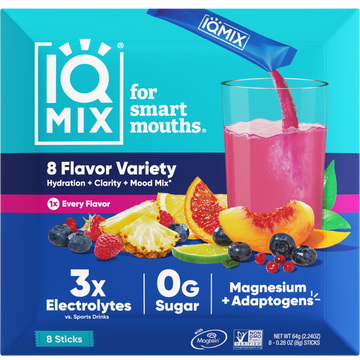In this era of health-conscious living, we’re constantly advised to drink more water for a host of purported benefits. In fact, we’re often told the more water the better! The simplicity of the solution, coupled with the prevalence of the message, can make it seem like a panacea for all our ills.
But is it true? Or are these claims just waves in the ocean of misinformation that floods our media landscape?
The truth is that dehydration, while it does occur, is not as rampant among healthy individuals as popular media might have us believe. In fact, there’s a far more pervasive problem than dehydration: over-hydration (more on this later).
In this article, we’ll be quenching your thirst for knowledge on dehydration, delving into the causes, symptoms, and how to properly rehydrate (without over-hydrating).
What Is Dehydration?
Dehydration is a condition that ensues when your body loses more water than it takes in, resulting in net water loss.[*]
There are three primary types:[*]
- Isotonic dehydration: This occurs when the loss of sodium and water from the body is relatively equal. It’s the most frequently encountered type of dehydration and is primarily associated with sweating.
- Hypertonic dehydration: This form of dehydration happens when the body loses more water than sodium (i.e., through respiratory water loss).
- Hypotonic dehydration: This occurs when sodium loss outpaces water loss, often due to the use of diuretics or following regimens with a diuretic effect, such as the keto diet or fasting.
How Common Is Dehydration?
Dehydration is not as rampant as it’s made out to be, particularly among healthy individuals.[*] It’s more prevalent in older adults, typically due to issues related to thirst regulation, the use of diuretic drugs, and mobility problems. However, the concept of widespread dehydration is largely a myth. Unfortunately, this understanding has not entirely seeped into our medical system and general public knowledge.
This is not to say that dehydration never occurs or isn’t a concern, but rather that its prevalence is generally overestimated.
Symptoms of Dehydration
So, how can you tell if you’re truly dehydrated? You can get a blood test to measure its osmolality, but this isn’t really practical. Most people recognize dehydration based on symptoms. Signs of dehydration can include:[*][*]
- Thirst
- Dry mouth
- Dark urine
- Reduced urination
- Headache
- Muscle cramps
- Fatigue
- Dry skin
- Constipation
- Sudden weight loss
- Sunken eyes
- Low blood pressure
- Dizziness or lightheadedness
- Fainting
- High fever and chills
- Elevated heart rate and breathing
- Confusion, irritability, or delirium
The last several symptoms on the list, starting with low blood pressure, are associated with severe dehydration and suggest a medical emergency. Severe dehydration can be life-threatening, so seek medical care immediately in these cases.
Remember, these symptoms can also be signs of other health conditions, so if you’re consistently experiencing them, it’s important to consult with a healthcare professional.
Causes of Dehydration
Fluid loss can arise in a few ways, and if the fluid is not adequately replaced, your body can become dehydrated. Here are the four main ways this can happen:
#1: Losing water through the skin
When you sweat, your body not only loses water, but also sodium, resulting in isotonic dehydration. This can occur in both warm and cold climates.
In warm climates, the reason behind increased sweat production is relatively apparent—it’s your body’s natural mechanism to prevent overheating. In cold weather, you tend to sweat due to moving while bundled up in warm clothes.
Other factors that can contribute to excessive sweating, and thus a higher risk of dehydration, include:
- Intense physical activity
- Hot weather
- Increased humidity
- Certain medical conditions, such as hypoglycemia, hyperthyroidism, and acromegaly (excess growth hormone)
#2: Losing water through the gastrointestinal tract
The gastrointestinal tract is another significant site of water loss, especially when experiencing vomiting and diarrhea. These conditions can lead to rapid water and electrolyte loss, which, if not replaced promptly, can quickly lead to dehydration.
#3: Losing water through urine
Kidneys, the natural filtration system of our bodies, remove excess water and waste products through urine. The urine system typically works seamlessly, however, certain situations and conditions can cause excessive urination, leading to significant water loss. These can include:
- Medical conditions, such as uncontrolled diabetes and certain kidney diseases
- Certain medications, such as diuretics
- Eating certain diets that produce a diuretic effect, such as the keto diet and intermittent fasting
#4: Inadequate water intake
Some people simply don’t take in enough water, whether due to being too busy, forgetting to drink water, or having no access to clean water. It’s also important to note that in older adults, the thirst mechanism is not always reliable, which can lead to inadequate water intake.[*]
How to Properly Hydrate
So, what is the secret to proper hydration? There are two key components:
- Drinking water to thirst (not too much, not too little)
- Consuming adequate electrolytes
Let’s break each of these down individually.
#1: Drinking water to thirst
You’ve probably heard that the human body requires eight glasses of water daily. You might be surprised to learn that there is no scientific evidence to support this advice. Nor is there any set amount of fluid each person should drink daily—the amount varies from person to person.
On the flip side, drinking too much water can lead to a potentially dangerous electrolyte imbalance known as hyponatremia or water intoxication, in which the sodium levels in your body become dangerously low. This is especially common among endurance athletes who consume excessive amounts of water over long periods without replenishing their electrolytes.[*] Contrary to popular belief, no athletes on record have died from dehydration during athletic events, but several have passed away due to hyponatremia.
The best rule of thumb is to drink to thirst. Our bodies have a finely tuned mechanism for signaling when we need to drink more water, and it’s generally reliable. This approach ensures that you get enough fluids while maintaining proper electrolyte levels.
#2: Consuming enough electrolytes
While water is essential for hydration, electrolytes, particularly sodium, potassium, and magnesium, are equally important. These minerals help regulate your body’s water balance and ensure nerve and muscle function. Sodium, in particular, is crucial in managing hydration levels.
Electrolytes are lost through sweat, urine, and feces and must be replaced through foods, drinks, and supplements. We recommend baseline electrolyte intakes of:
- 4–6 grams of sodium
- 3.5–5 grams of potassium
- 400–600 mg of magnesium (although more magnesium is OK)
Meeting your electrolyte needs can be achieved by consuming electrolyte-rich foods, salting your meals generously, and adding electrolytes to your water.
Let’s focus on that last option for a moment. Drinking electrolyte-infused water to thirst helps prevent dehydration and hyponatremia simultaneously. Doing this ensures optimal electrolyte and fluid intake, enabling your body to perform and function at its best.
How to Make Electrolyte Water
While you can make your own electrolyte homebrew, the simplest way to make electrolyte water is to add a high-quality electrolyte supplement, like IQMIX, to water. IQMIX is carefully formulated with a keen understanding of the body’s hydration needs, emphasizing high-quality ingredients and a perfect balance of key electrolytes. Plus, unlike sugary sports drinks, IQMIX contains zero sugar.
Try IQMIX in a variety of flavors, including Peach Mango, Lemon Lime, Blueberry Pomegranate, and Blood Orange. To find your favorite IQMIX flavors, select our 8-Stick Sampler, or go all-in with our 20-Stick Variety Pack. And don’t miss our new limited-edition 20-Stick Tropical Pack!
Simply pour an IQMIX powder packet into a glass of water or water bottle for an instant, zero-sugar electrolyte drink that supports hydration, electrolyte replacement, and overall well-being!
Written by Katie Koschalk, a health and wellness writer, certified holistic nutritionist, and certified personal trainer based in California.




